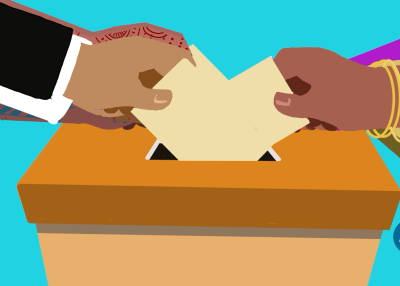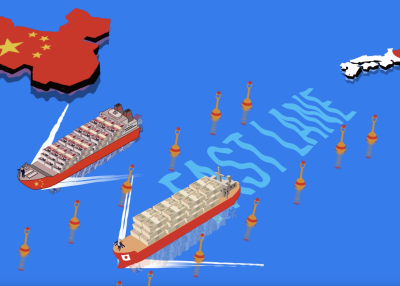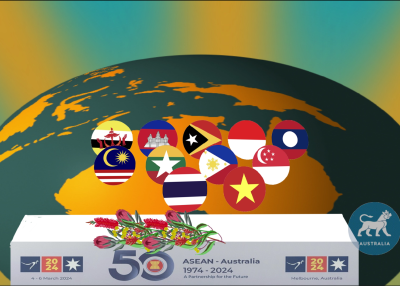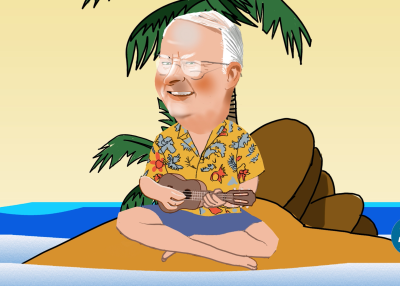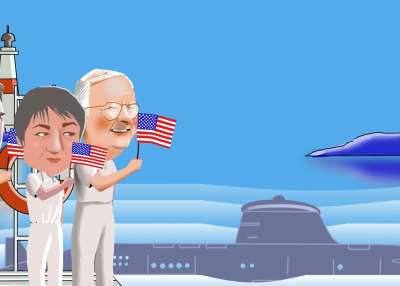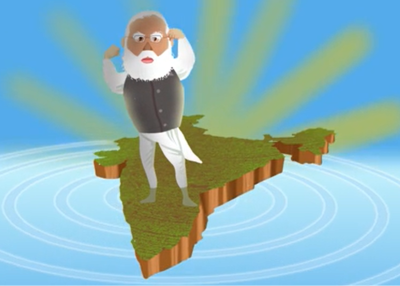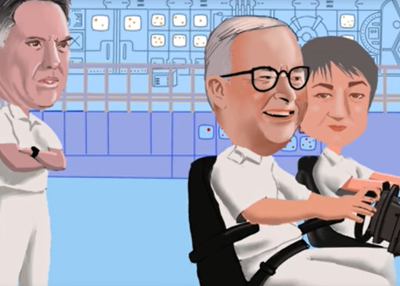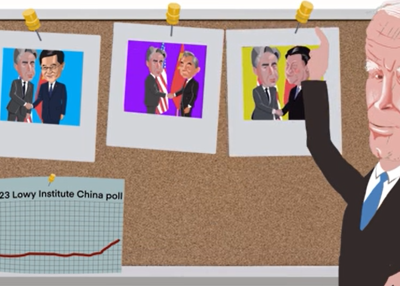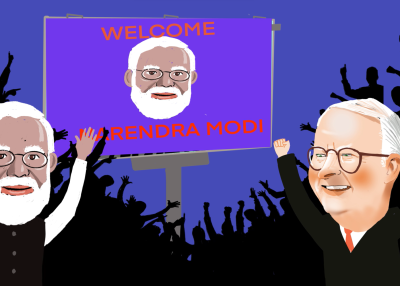Briefing MONTHLY #42 | September 2021
Animation by Rocco Fazzari.
UNDER WATER MATTERS
Assessing the Asian reaction to Australia’s decision to buy nuclear powered submarines comes down to an old dilemma in regional diplomacy interpretation. How should often opaque or pro-forma official statements be balanced against assumed or reported insider thinking?
The dilemma is neatly ventilated by the different perspectives on this issue from two long-time foreign policy officials turned media commentators – Bilahari Kausikan and Allan Gyngell.
Kausikan, a former Singapore United Nations ambassador turned National University of Singapore academic, says for 15 years there has been growing acceptance in Southeast Asia that the US is a vital part of any balance to deal with the rise of China.
He says: “Nobody wants to shun China, but everybody has some degree of concern about certain aspects of China … Southeast Asia is diverse, and you will always have a variety of diverse public reactions, but privately in all but one or two countries what I have just described is the general attitude and the (AUKUS) agreement must be seen in that context.”
But Gyngell, a former Australian Office of National Assessments director turned Australian National University academic, says Australian policymakers and commentators suffer from a form of confirmation bias (not his term) in their interpretation of regional comments.
He says: “I think there is a lot of wishful thinking on the part of some in Australia about this. They hear people in the region saying publicly we want the region to be free of great power conflict and then behind the scenes they say to us ‘we really want you there’. It is at least as plausible that the ‘we really want you there’ is (said) because they don’t want to upset us.”
Japan: Japanese foreign minister Toshimitsu Motegi “welcomed the security cooperation between Australia and the US” after a telephone call with foreign minister Marise Payne, but notably made no reference to Australia acquiring a nuclear capacity.
But AUKUS seems set to ricochet around Japanese politics given the split which quickly emerged amongst the four Liberal Democratic Party candidates competing to be prime minister. Taro Kono, a former foreign minister, and Sanae Takaichi backed Japan getting nuclear boats but Fumio Kishida, also a former foreign minister but now incoming prime minister, and Seiko Noda were opposed.
India: Despite media reports that India supports the AUKUS deal, the government has actually not issued a specific statement addressing it, including remarkably in the record of the meeting between prime ministers Scott Morrison and Narendra Modi in Washington. Officials have persistently sought to avoid commenting on the basis that AUKUS has nothing to do with the Quad partnership with Australia.
India’s most notable early response was a foreign ministerial meeting with France a day after AUKUS was announced in which the two countries committed to building their Indo-Pacific partnership based on a “relationship of political trust between two great sovereign nations”.
In this analysis of how India is trying to balance relationships with France and Australia, Observer Research Foundation fellow Abhijit Singh says: “The AUKUS saga evokes mixed feelings. Many are happy for Australia … but there is no mistaking a sense of commiseration with France, India’s foremost partner in the Indian Ocean.”
Indonesia: The foreign ministry said it “cautiously” noted the decision but then tersely warned Australia about its nuclear non-proliferation responsibilities and its commitment to regional peace.
But the not so subtle warnings to Australia appear to be growing with diplomat Abdul Kadir Jailani arguing that Australia “may change the geo-political landscape of the region”. And in a similar vein The Jakarta Post senior commentator Kornelious Purba has described Morrison as the new US deputy sheriff in the region who could support Papuan independence from Indonesia.
Malaysia: Newly installed prime minister Ismail Sabri Yaakob was one of the most critical regional leaders, saying: “AUKUS could potentially be a catalyst towards a nuclear arms race in the Indo-Pacific region, as well as provoke other powers to act more aggressively.” As a newcomer to foreign affairs, it is hard to judge the depth of Ismail’s concern since Malaysia is also a Five Power Defence Arrangements ally with Australia.
But former long serving prime minister Mahathir Mohamad attacked the agreement saying Australia “seeks friends from the West, not from the East”. Mahathir can be easily dismissed as a long-time critic of Australia, but until now he has been unusually positive about it in his recent guise as an opposition politician.
- Listen to Bilahari Kausikan on these issues at the Lowy Institute here and Allan Gyngell at the Australia in the World podcast here.
- Susannah Patton, of the US Studies Centre, says it would be imprudent for Australia to “blithely hope that ultimately Southeast Asia will come around to our way of seeing the world”.
See DATAWATCH for Asia’s submarine fleet.
NEIGHBOURHOOD WATCH
AFTER ABE
Japan will need a significant reshuffle of its ministry to capitalise on an unusually vigorous and public competition for its prime ministership which, in the end, produced a predictable safe leader.
Incoming prime minister Fumio Kishida is a third-generation politician with a family link to a former prime minister; heads one of the Liberal Democratic Party’s oldest factions and was groomed to be a potentially leader during the unusually long eight Shinzo Abe administration.
He was beaten by outgoing prime minister Yoshihide Suga when Abe suddenly retired a year ago with Suga seen as a compromise amongst faction leaders and more likely to maintain Abe’s policy mix.
Kishida has floated ideas about less neoliberal economic policies and was associated with somewhat less nationalistic foreign policies when he was foreign minister, but does not have any distinctive record of innovative policymaking.
He won the job in a second round ballot where elected politicians had more sway than party members making him more beholden to his colleagues than a prime minister with a more popular base.
But the leadership campaign against a more outspoken younger minister, a hard-line conservative, and a social progressive, has possibly shown some rising public appetite for more openness and change in Japanese policy making.
Osaka School of International Public Policy Professor Haruko Satoh told an Australian Institute of International Affairs webinar last week: “What we are seeing is a society expressing change and an LDP trying to find its relevance in a changing society.”
Kishida has to face a national election by November amid falling support for the government due to its troubled management of COVID-19, some corruption scandals and the challenges of an ageing society.
Bringing some more dynamic younger ministers into his ministry would be one way to generate some enthusiasm when voters have been drawn to non-mainstream candidates at some recent elections.
BASES LOADED
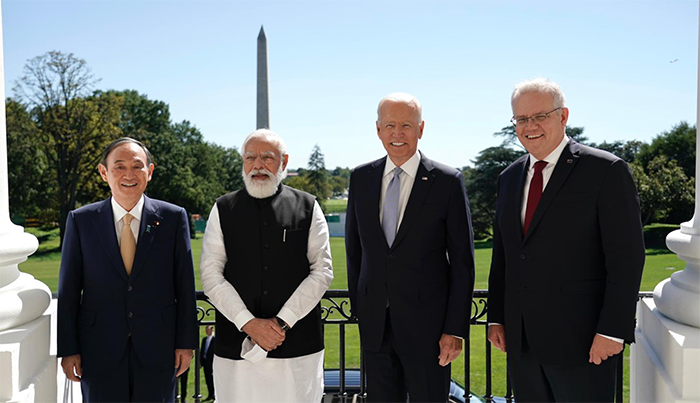
New line-up: Yoshihide Suga (left), Narendra Modi, Joe Biden and Scott Morrison in Washington. Source: Twitter.
Unfortunately for Scott Morrison and Narendra Modi, baseball might provide a better analogy than cricket for the Quadrilateral Security Dialogue’s sudden rise to the newest annual leaders' meeting on the diplomatic pitch.
As Philadelphia Phillies fan Joe Biden and high school baseballer Yoshihide Suga would know well, when all four bases are loaded there can be a Grand Slam – or a force out.
After starting as an ad hoc joint naval rescue mission during the 2004 Indian Ocean tsunami and then evaporating amid mutual suspicions in 2008, the Quad now seems more poised to score some runs.
It has gone from a tentative meeting of diplomats five years ago to the latest annual leaders’ summit on a crowded Asian diplomatic agenda which already involves annual leaders’ meetings for the Asia Pacific Economic Cooperation group and the East Asia Summit.
After the AUKUS submarine military cooperation agreement, the Washington Quad leaders’ summit seemed to deliberately emphasise a non-military agenda for muscling up to China. It included vaccine distribution, climate change, trade supply chains, rare earths production, emerging communications technologies, infrastructure and terrorism prevention after Afghanistan.
And if the bases weren’t already loaded, the meeting communique promised an even bigger role on the world stage to “deepen our cooperation in multilateral institutions, including at the United Nations, where reinforcing our shared priorities enhances the resilience of the multilateral system itself.”
But with that sort of ambition, Southeast Asian nations may be even more nervous about how seriously to take the regular acknowledgement high-up in the latest Quad communique that “we reaffirm our strong support for ASEAN’s unity and centrality”.
- ISEAS-Yusof Ishak Institute fellow William Choong says Quad members should “adopt a lower-key strategy in promoting the Quad ‘brand’, while strengthening substantive relationships with ASEAN member states. This would enable stronger relationships with like-minded states without antagonising China.”
TRADE: 11 ÷ 2 = ?
When the leaders of New Zealand, Singapore and Chile met on the sidelines of the 2002 Asia Pacific Economic Cooperation group in Mexico to talk about economic relations, few people paid much attention to the outcome.
But almost two decades on the grandchild of their Trans-Pacific Strategic Economic Partnership Agreement is shaping up as the forum where the region is going to decide whether trade is a unifying or dividing force.
The applications by China and Taiwan to join the now 11-member Comprehensive and Progressive Agreement for Trans-Pacific Partnership (CPTPP) seem set to unsettle the region’s most advanced trade group.
China’s bid has been generally treated sceptically due to the increasingly interventionist management of its domestic economy, with Australia making the particular point that it will have to end its coercive approach to trade. Taiwan’s bid has received some more sympathetic attention reflecting the growing determination of some countries to provide symbolic shows of support in the face of military threats from China.
In an illustration of the dilemma it poses for the CPTPP, Japan has warmly welcomed the Taiwan bid, as has the US which ironically pulled out of the group. Malaysia has seemingly ignored the Taiwan bid but said it is looking forward to China joining.
China and Taiwan have each sought to step up the tension with China warning countries against considering Taiwanese membership while Taiwan has warned that accepting China first would allow it to veto Taiwan.
- China may be much better prepared to accept CPTPP competition and transparency rules than sceptics think, according to this Asian Trade Center analysis.
- Taiwan is removing evidence of its authoritarian past to create a new brand as it steps up its campaign for international support, according to this Nikkei Asia piece.
MYANMAR’S HOTSEAT
The United Nations most powerful members may have declared a stalemate over who should occupy Myanmar’s seat in the General Assembly - but its officials have conceded a civil war is emerging on the ground.
No representative from Myanmar was allowed to address the UN General Assembly as had been scheduled on September 27 after the US, China and Russia reportedly agreed the former democratic government ambassador Kyaw Moe Tun would remain in place – but silent.
The decision was a symbolic victory for the shadow National Unity Government (NUG) opposing the military junta and may reflect recognition that its declaration of a “people’s defensive war” on September 7 has taken the country close to a civil war.
It followed a report by the UN High Commissioner for Human Rights which warned of a “human rights catastrophe that shows no signs of abating”. But underlining the prospect of the country falling into sustained conflict, the report detailed the emergence of armed resistance groups which it noted were aligned but not controlled by the NUG.
UN human rights chief Michelle Bachelet said: “These disturbing trends suggest the alarming possibility of an escalating civil war. The national consequences are terrible and tragic – the regional consequences could also be profound.”
- The Human Rights Office report is here.
- This Nikkei Asian Review article details the remarkable transformation of Myanmar’s protest movement into a fighting force.
ASIAN NATION
KOREA CALLING
Australia marks 60 years of diplomatic relations with South Korea this year with a new Comprehensive Strategic Partnership, but former ambassador Bill Paterson has warned the relationship needs a bigger kick start.
He says Australia needs direct intervention by the US “to encourage a more forthcoming Korean approach” and will also need to make a bigger ministerial and diplomatic effort to build connections with future Korean leaders.
Patterson, who was ambassador in Seoul in 2013-16, says the relationship has languished despite Australia frequently declaring it wants a closer defence connection to deal with regional challenges.
“In reality, the effort on both sides has been minor and lacking in commitment, resources and enthusiasm. Australia’s Department of Foreign Affairs and Trade and Defence Department have seemed comfortable with modest levels of engagement,” he writes in a University of West Australia strategy paper on building a better relationship. The paper was published before the foreign and defence ministers meeting in September which agreed to more bilateral defence exercises.
Paterson argues: “The political climate to underpin a more forthcoming Korean approach to the defence relationship is in place, notwithstanding Korea’s caution toward offending and risking further arousing its big neighbour.”
But he says: “Australia should seek active support and intercession from the United States – which would welcome a closer Australia-Korea security relationship.”
However, in an indicator of the sensitivity in the relationship, Hankuk University of Foreign Studies academic Jae Jeok Park also warns in the same paper that Australia needs to reassure Korea that its increasingly close relationship with Japan does not come at the expense of Korea.
“There are suspicions in South Korea that Australia has been (and will be) more supportive of Japan’s security posture than of South Korea’s,” Park says.
REVERSE MOBILITY
A review of the New Colombo Plan has found that most Australian students who participate in it go on to work in jobs based in the region or with employers engaged with those countries.
The study found three quarters of program’s alumni who were surveyed either work in or with the most popular host countries for the program - Japan, Indonesia, China, Vietnam, South Korea, India, Singapore and Malaysia.
Deakin University’s Professor Ly Tran, the report’s lead author, said the findings demonstrated the success of the seven-year-old program in building cross-cultural ties and regional engagement for young Australians with Indo-Pacific neighbours.
The report says the NCP is a “stellar example of reversal mobility, through which students from a developed country in the Global North are given the opportunity to study, undertake internship and experience life in the Indo-Pacific region”.
The NCP has also contributed to Australia having one of the highest levels of learning abroad in the world with around 23 per cent of Australian undergraduate students participating in international learning opportunities in 2019. That compared with 7.4 per cent in the United Kingdom and 16 per cent in the United States. Nearly half of the Australians studied in the Indo-Pacific.
The Australian Research Council-funded project found that students' primary motivations for learning abroad in the Indo-Pacific were to challenge themselves (96 per cent), gain experience and broaden their understanding of the region (96 per cent), become familiar with another culture (96 per cent), and travel to a new place (95 per cent).
Here’s how students found their NCP experience:
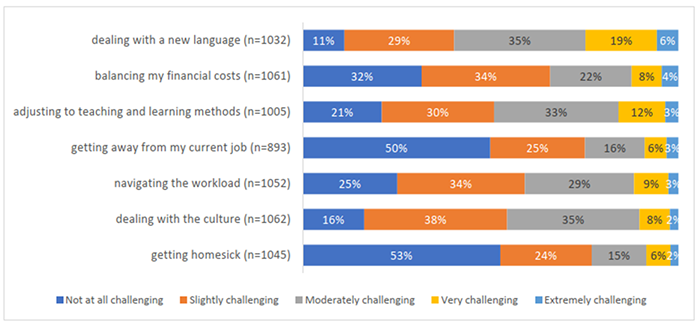
Source: Deakin University
HARD WORK
It typically takes three people to change a lightbulb according to the old joke. So, what are we to make of the now six federal ministers who have variously announced the government’s new agriculture visa rules – and that’s before each state gets involved?
Deputy prime minister Barnaby Joyce, foreign minister Marise Payne, Agriculture minister David Littleproud, employment minister Stuart Robert, international development minister Zed Seselja and immigration minister Alex Hawke have each claimed ownership of the scheme in the past two months.
But it reflects how old programs driven by youth cultural exchange (backpacker visas) and aid (Pacific islander work visas) have morphed into a bigger project to provide long-term labour to increase agriculture production by 50 per cent by 2030 – with more than three quarters being exported mostly to Asia.
There is obvious tension between a development scheme to give Pacific islanders useful skills to take back home and thus provide non-cash aid in the Pacific Step-up and a longer-term plan to bring permanent workers from other Asian countries to rural areas.
In the first step the government introduced an Australian Agriculture visa on August 23 with a pathway to permanent residency and four Southeast Asian countries were due to be signed up by the end of September
In the second step on September 14, it was announced the Seasonal Worker Program (nine months work) and the Pacific Labour Scheme (1-3 years of work) are being aligned under new management to service more industries and ensure Pacific islanders from ten countries remain competitive against other Asian workers.
Development economist Stephen Howes says that by creating different rules for Pacific islanders and Southeast Asians, depending on what happens, the government runs the risk of being accused of being racist by either or both of these neighbouring countries.
He says: “If we end up with a more regulated scheme for Pacific islanders and a less regulated scheme for Asians, we will be implying that the former need more protection than the latter. This is either paternalistic to the citizens of the Pacific, or negligent to Asians, or both. That would be racist policy.”
And in another twist, Timor Leste is on track to become a member of the Association of Southeast Asian Nations but is classified as a Pacific country for visa program purposes.
DEALS AND DOLLARS
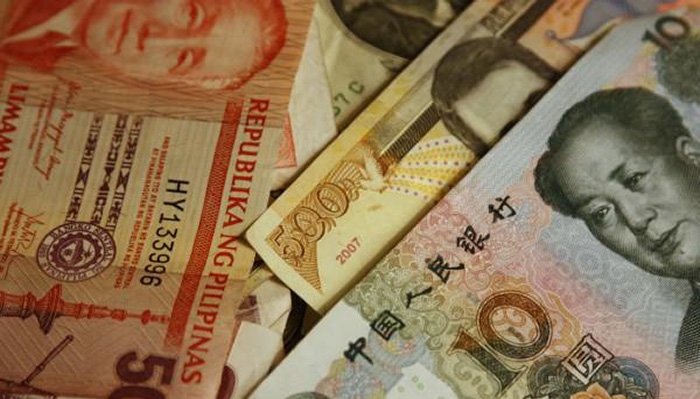
INDONESIA BLUEPRINT
Trade minister Dan Tehan has declared Australia to be one of the two largest economies in Southeast Asia, alongside Indonesia, in a new government push to get business to refocus on emerging opportunities in the country.
“Australia has the goods, services, expertise and know-how which align with Indonesia’s major economic priorities,” he said in Jakarta launching a new Department of Foreign Affairs and Trade report on how to take advantage of the bilateral trade agreement, recent Indonesian business reforms and changes in the country’s economy.
The Blueprint for Trade and Investment in Indonesia focuses on education and training; health and aged care; agrifood; and resources and energy services, but other sectors will be covered in future.
It also examines how digitisation, a rising middle class and demographic shifts have changed the Indonesian business scene and argues that these changes mean Australian businesses should “look at Indonesia through a new prism.”
“While COVID-19 has been a major challenge for Indonesia, its economy has remained resilient compared with many peers. Although its evolving democracy and devolution of power to local areas means policy making has become more complex, Indonesia has made steady progress in governance improvements over the past decade,” the report says.
The Blueprint draws on the Team Australia approach advocated by the Business Council of Australia/Asia Society Australia A Second Chance report to call for cooperation between business, government and other institutions to produce some early breakthroughs from the Indonesia-Australia Comprehensive Economic Partnership Agreement.
It says: “There will need to be more collaboration and knowledge sharing to manage the challenges of doing business in such a different culture and the complexities of the emerging opportunities in areas such as ecommerce and healthcare.”
Disclosure: Greg Earl edited and contributed to the Blueprint.
POWERSHIFT
The Sun Cable renewable energy venture backed by Andrew Forrest and Mike Cannon-Brooks will spend about $3 billion in Indonesia building its power cable to Singapore, leaping into the top ranks of Australian investors in the country.
The Australia-Asia PowerLink plans to spend about US$1 billion during the construction phase between 2024 and 2028 and then another US$1.5 billion building and running its marine repair base out of the country.
The $30 billion project is aiming to generate up to $2 billion in Australian export income a year providing 15 per cent of Singapore’s power from its Northern Territory solar farm, but is not so far committed to providing electricity to Indonesia.
Indonesia’s Coordinating Minister for Maritime Affairs and Investment Luhut Pandjaitan said the project would have a big impact on the economy in technology transfer through the participation of two academic institutes, as well as supply of goods and services. It would also help accelerate Indonesia’s plans to develop a lithium battery industry.
Australian ambassador Penny Williams said the project would involve academic institutions, universities, development and training and even some internship opportunities in a model for other companies looking at Indonesia.
PACIFIC UNBANKING
Papua New Guinea’s competition regulator has done what Australian government rhetoric and financial incentives are struggling to do – keep big Australian companies in the Pacific countries.
The Independent Consumer and Competition Commission (ICCC) has rejected the $420 million sale of Westpac’s local unit to Kina Securities in a determination which said the deal would “limit national economic progress”.
The decision means Westpac can’t sell its PNG and Fiji banking operations as Kina was the only buyer and it may be forced to wait and try again later or simply run the businesses down.
The sale was part of the bank’s plan to focus on banking in Australia and New Zealand and head off money laundering exposures in the Pacific region. It follows Westpac’s previous sale of businesses in smaller Pacific countries in 2015 and the ANZ’s sale of its PNG retail business to Kina Securities in 2019 just as the Australian government encourages companies to join its Pacific Step-up.
TELSTRA PACIFIC
Telstra Chief executive Andy Penn is maintaining an arms-length approach to buying the Pacific mobile phone company Digicel Pacific with the federal government as if to emphasise that it would be an act of national service for which Telstra should be rewarded.
Penn visited Papua New Guinea in August to discuss buying the company with the country’s political leaders and regulators suggesting Telstra is stepping up its due diligence on the potential deal.
The government has promised debt financing via its Pacific Step-up program to help Telstra take an equity stake as part of a potential $2 billion plan to prevent a Chinese company from buying the company.
But in this Australian Financial Review interview, Penn studiously sought to distinguish any investment in Digicel from the rest of his new growth strategy for Telstra.
“It’s not included in our financial ambitions or guidance. Were we to acquire it [Digicel] we would effectively operate it and run it under our business relatively independently to the other parts,” he said.
BANGLADESH BOUND
The federal government has added Bangladesh to its network of formalised economic relationships across Asia catching up with the country’s emergence at the top ranks of regional high growth economies in the last few years.
Trade minister Dan Tehan has added a new element to the web of trade deals and economic partnerships by signing an Australia-Bangladesh Trade and Investment Framework Arrangement with the Bangladesh commerce minister Tipu Munshi on September 15.
“Australia has the potential to meet Bangladesh’s increasing education, training and energy needs. And we offer world-class expertise in agriculture and infrastructure development,” Tehan said.
Bangladesh ranks as Australia’s 25th largest goods export market valued at $941 million last year and 33rd largest source of imports valued at $1 billion.
Australia plans to host the inaugural meeting under the new Arrangement next year when the two countries will mark 50 years of bilateral relations.
AFTER NET ZERO
The Reserve Bank of Australia has joined the chorus of commentators expressing concern that the momentum towards achieving net-zero carbon emissions by mid-century in north Asia will damage fossil fuel exports.
An article in the Bank’s September Bulletin forecasts that Australia's coal exports could decline significantly by 2050, with a more modest effect likely for liquefied natural gas exports; but both may be offset to some degree by increases in green energy exports.
It says the overall impact of commitments by China, Japan and South Korea to cut emissions by mid-century is expected to be small and gradual, although it could be significant for the directly affected sectors.
“Significant uncertainty remains, including the speed and manner in which countries attempt to achieve net-zero emissions and technological developments that could change the efficiency and carbon intensity of fossil fuels,” the article says.
DATAWATCH
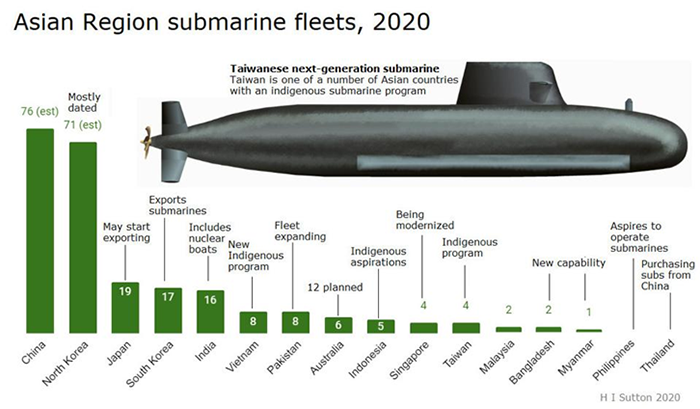
Source: Covert Shores/hisutton.com. (NB: Australia now plans eight nuclear submarines.)
DIPLOMATICALLY SPEAKING
"(Indonesian President) Soeharto … saw with absolute clarity the utility in wider geographical terms of a stronger bilateral relationship with us and absolutely encouraged it. The capstone was the Australia-Indonesia security agreement of 1995 … It was only possible because of the intense personal warmth and deep mutual admiration that did develop between (then Prime Minister Paul) Keating and Soeharto … I was never quite able to forget or forgive not only his central role in the invasion of East Timor in 1975 but also the terrible genocidal army-led massacre of more than 500,000 Communist Party sympathisers and alleged supporters of the 1965 coup that led to Soeharto’s ascension. Paul, always the supreme realist, was deeply impressed by the role Soeharto had played as the stabilising force in the region and had no such reservations or perhaps even particular memory."
- Former Australian foreign minister Gareth Evans launching Young Soeharto by David Jenkins (8/9/2021)
ON THE HORIZON
DUTERTE DEADLINE
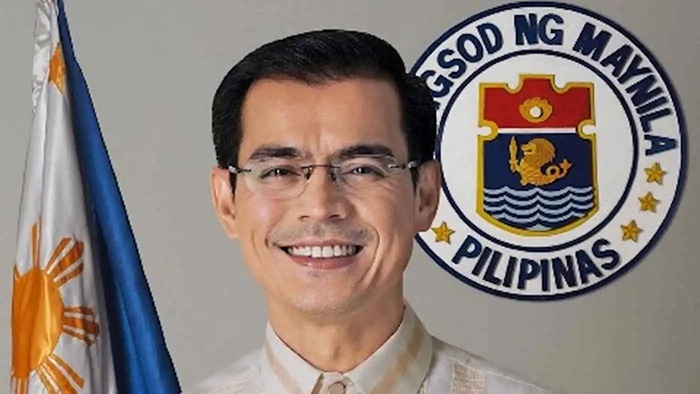
Macron of Manila? Presidential candidate Isko Moreno
October 8 is the day Filipinos will know how their country might look after six years of turmoil under outgoing President Rodrigo Duterte. Candidates for the May 2022 election must file their paperwork by then after a rush to get voters registered by the end of September due to disruption caused by pandemic shutdowns.
So far there are two declared candidates who are seen to have serious prospects of winning the job which Duterte must leave under the country’s one term rule.
Manila mayor Isko Moreno has been dubbed the Emmanuel Macron of the Philippines for his centrist image and rags to riches story of rising from a Manila slum neighbourhood to successful term as mayor.
World champion boxer and incumbent senator Manny Pacquiao has broken with Duterte’s party to stake his own claim for the job after divisions in the party over who to support.
Duterte is taking a leaf out of the Vladimir Putin succession playbook in Russia and running for vice-president in what is seen as an attempt to retain his power in a system where the president and vice-president are elected separately.
The first question for October 8 is whether Duterte’s daughter Sara, who succeeded him as mayor in the family stronghold of Davao, will nominate for president and turn the election into a dynastic affair. The second question is whether the family of former dictator Ferdinand Marcos will make a bid to reclaim their even larger dynastic legacy with his son Bong Bong joining the presidential race.
ABOUT BRIEFING MONTHLY
Briefing MONTHLY is a public update with news and original analysis on Asia and Australia-Asia relations. As Australia debates its future in Asia, and the Australian media footprint in Asia continues to shrink, it is an opportune time to offer Australians at the forefront of Australia’s engagement with Asia a professionally edited, succinct and authoritative curation of the most relevant content on Asia and Australia-Asia relations. Focused on business, geopolitics, education and culture, Briefing MONTHLY is distinctly Australian and internationalist, highlighting trends, deals, visits, stories and events in our region that matter.
We are grateful to the Judith Neilson Institute for Journalism and Ideas for its support of Briefing MONTHLY and its editorial team.
Partner with us to help Briefing MONTHLY grow. For more information please contact [email protected]

This initiative is supported by the Judith Neilson Institute for Journalism and Ideas.

